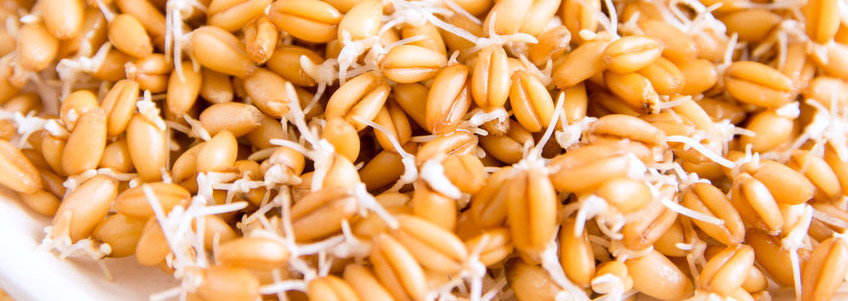
One popular—and delicious—option is sprouted grain bread. The sprouting process unlocks nutrition from the grain, increasing its bioavailability and digestibility. The bread also has a unique flavor and is naturally sweeter than traditional whole grain bread.
If you’d like to take on sprouting or improve your process, here a few tips:
- Sprouted grain flours have a low water activity level. However, research has shown that they decrease proof time and increase loaf volume and stability.
- Some sprouted grain flours have double the shelf life of conventional whole wheat flour. Store them in a dry, cool place.
- In most cases, little to no sugar is used in sprouted grain bread products.
The process for sprouted grain bread
If you’re sprouting your own, the key is to find the right soaking time. There are two standard methods for commercially producing sprouted grains for bread products. Both begin with sprouting the grains to start the germination process under closely monitored heat and moisture conditions. Over-sprouting causes fermentation and can influence the nutritional value of the sprout and the quality of the bread.
One process stops and dries the sprouts, locking in the sprouting stage. These sprouts are either stored for sale or milled into flour. Another process pounds the sprouts into a mash. Wet sprouts are sold in this state, mostly frozen, for products like bread or tortillas, normally labeled “flourless.”
Cereal grains, such as wheat, millet, barley, spelt, or a mix of these, are most commonly used. However, sometimes legumes such as soybeans or lentils are used for sprouts as well.

